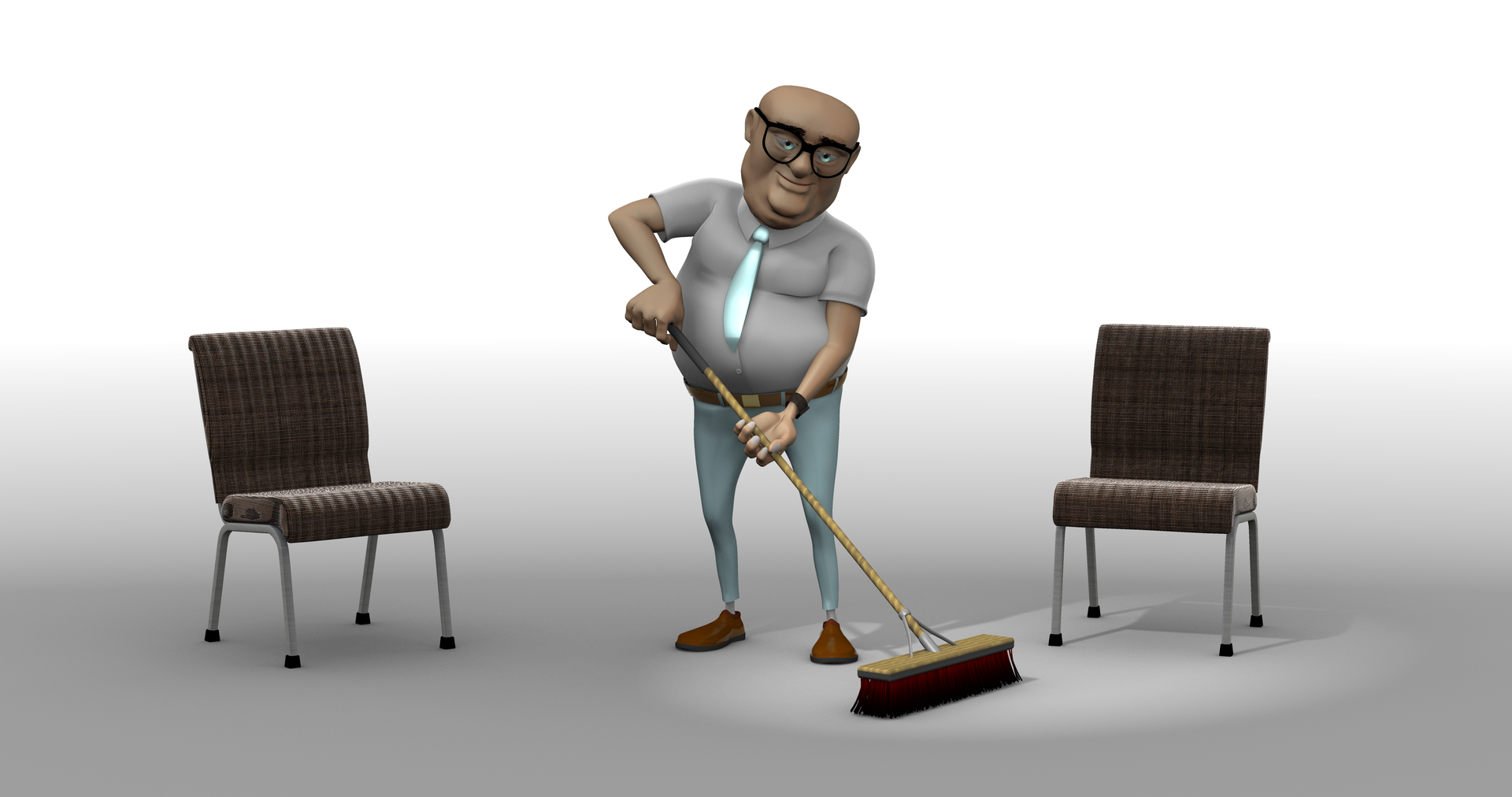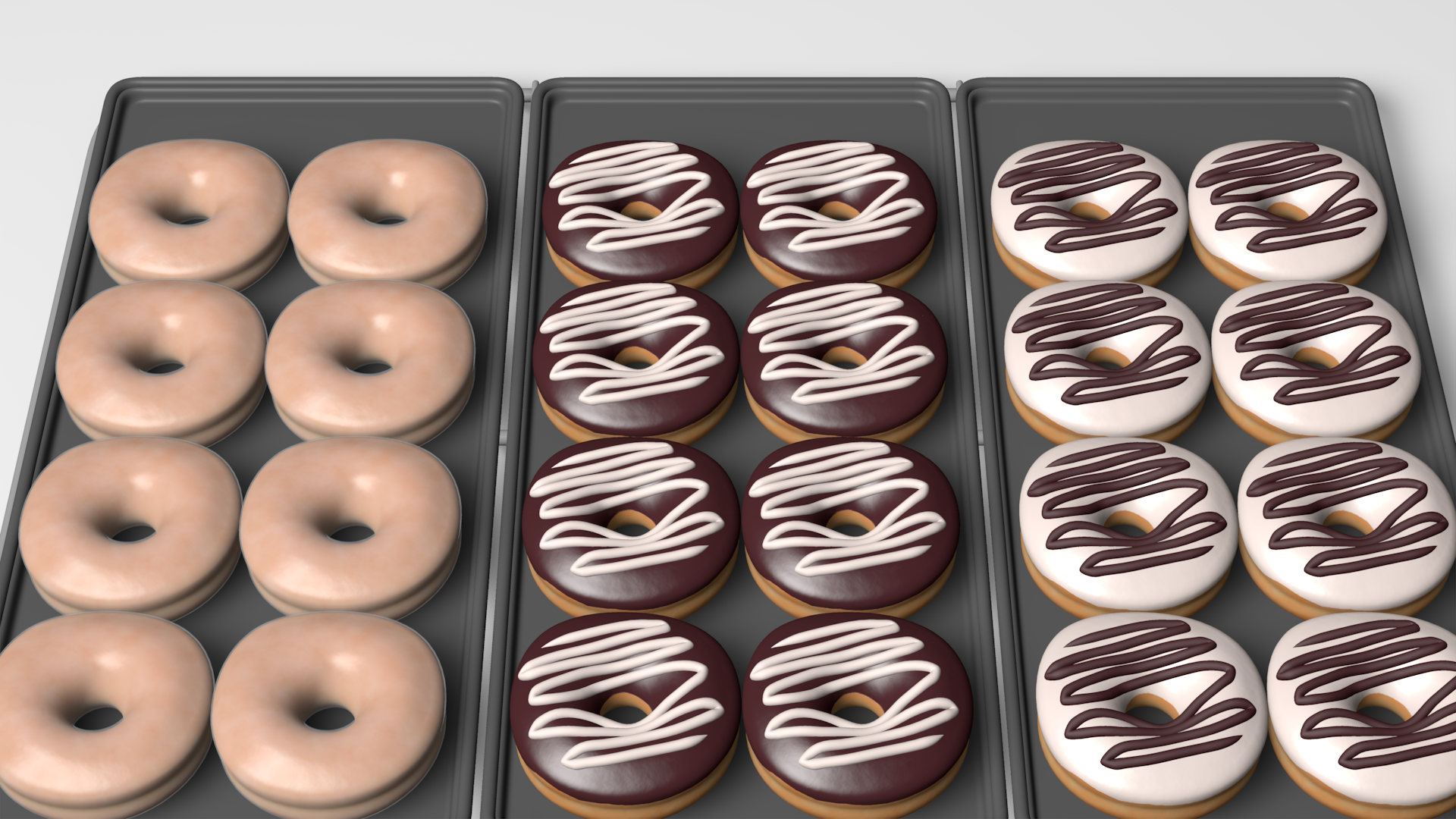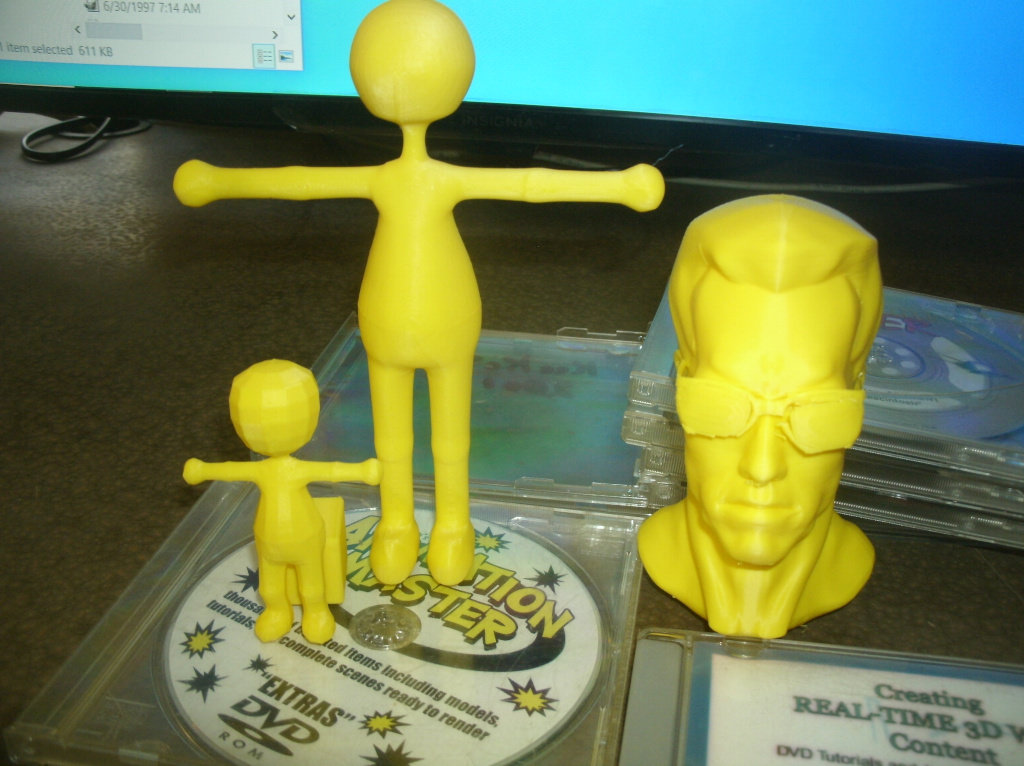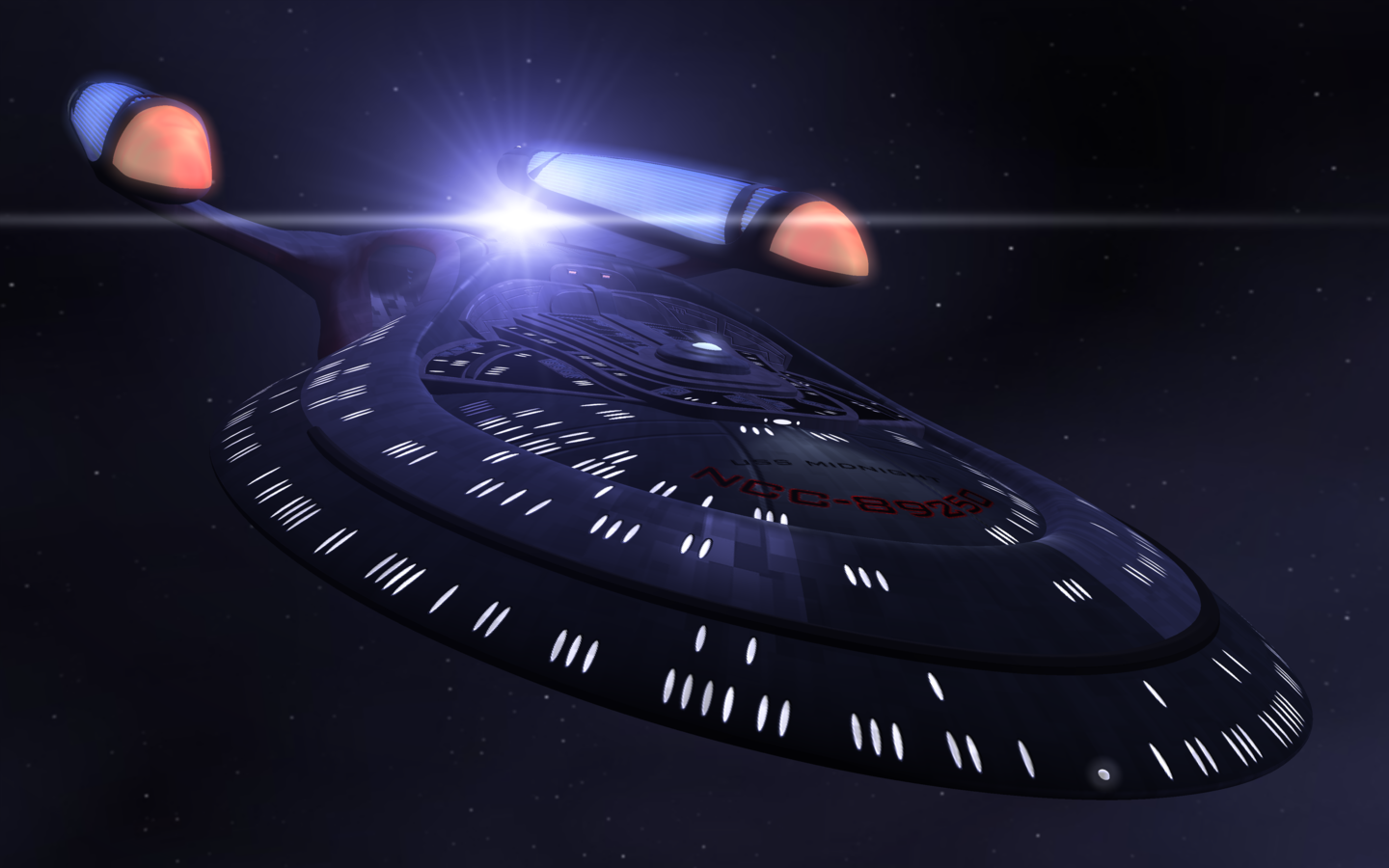
wsimike
-
Posts
61 -
Joined
-
Last visited
Content Type
Profiles
Forums
Events
Posts posted by wsimike
-
-
Valid 4 Point Patch = Any closed combination of 4 CPs on two or more splines.
i guess this is wat i'm ultimately confused by. in my original post, i indicated that i had created 4 seperate splines. i then joined them so their points (cp's) formed the corners of a square. but, 2 my surprise, this did not create a valid patch as i was thinking it would. i thot it would be a valid patch because i had 4 seperate splines (joined together), and 4 control points. i guess wat really happened is it turned my 4 splines into 1 spline joined to itself?
it seems to me that there needs to be one more button/feature/tool. i noticed the tool to create a 5-point spline. wouldn't be just as useful to have a tool that would allow u 2 select 3 or 4 cp's in a closed loop and turn it into a valid patch?
thanks again!
You've pretty much go the idea, even if you don't realize it :-).
Think of your 4 splines like roads. If you placed the ends of the roads together in a square pattern and wanted to drive somewhere.. you'd come to the end of one road, only to find that it turned 90 degrees and continued on... you'd come to another corner.. then another, and another.. finally realizing you're back where you started. Looking at the street name, you'd realize that it's the same street name (the same spline) all the way around. So.. it's basically one continuous looping, road... not four separate road segments. That analogy in mind, A:M would not recognize that as a valid patch.
Now.. say you had those same 4 road segments and lined them up, only now with them overlapping so they don't meet up exactly at the corners, but continue on.. creating 4 intersections. In A:M terms, each spline would/could have 4 or more total CPs... two to attach it to another spline, and two "hanging off" either side (Jeff Cantin's tutorial illustrates this). Well, now in your car, you're faced with options when you come to those corners.. do you turn 90 degrees one way... 90 degrees the other way, or continue going straight? Looking at the street names, you realize that each is uniquely named - they are considered 4 different splines. You now have 4 individual roads each intersecting and continuing on, instead of one endlessly looping road.
I guess the best way I could put it is that a single patch is generally part of a larger object, not an object unto itself. Meanwhile, if I'm not mistaken, when A:M recognizes an object as a single, looping spline, it's considered a "negative space" and can actually be placed inside a larger, valid patch to create a hole.
Again, it's one of those wierd things that just has to "click".. I totally know where you're coming from.. You're getting a grasp on the "what".. now you're just trying to understand the "why". You will :-).
There *is* a way to arrive at what looks just like your single looping spline, but is actually a valid patch.. but I don't want to confuse you. When you understand how splines/patches work, how to get that result will be self-evident and it won't need explanation - trust me on that :-).
Good luck!
Mike
-
well there are quite a few enhancements to the workflow that the interface chapters don't cover and the aforementioned modeling mode changes. There are changes to the timeline and expressions are not covered. I do plan on adressing all of this in the update, but finding the time to write has been quite the challenge lately. I hope to have chapter 2 updated for current owners and on my site soon but no promises

Overall the information is still applicable for 90% of the tutorials, there may occasionally be a newer/better way to do something though.
-David Rogers
Excellent..
Thanks for the reply!
Well, I'm headed to a nearby Barnes & Noble soon so I'll see if they have it there.
So long as all the basics are still relevant - even if not reflective of the "latest and greatest" methods, I'll be fine.
Thanks again..
Mike
-
This is a topic that, for me anyway, is always interesting..
Basically, what inspired you to get into animation to begin with.. and/or, for the more experienced among you, what continues to inspire you?
Personally, my desire to get into animation came about without me even realizing it. And it's been dormant for some time now... several years, easily. Sound wierd? Yeah, it does to me, too.
I know exactly where my inspiration comes from. It's from a series called ElfQuest I was introduced to about 18 years ago, by Wendy and Richard Pini, or WaRP Graphics. I have never been a fan of comics overall, but I received a collection of different Marvel comics one year for Christmas from my brother. Among them was #16 of the Marvel re-issues of the original ElfQuest story. I read the other comics in the bundle, and forgot about them. I read that one EQ issue.. and was hooked. I went on to buy every issue of the Marvel Re-prints, some of the original WaRP Graphics magazine-size issues and then moved on to the subsequent series, "Siege At Blue Mountain", "Kings of The Broken Wheel" and beyond. To this day, anytime I'm reminded of ElfQuest I feel like pulling out the collection and reading the whole thing again. To this day, it's one of the few "printed" stories where I get choked up by the death of a key character, or am still scared for another character in a bad situation - even though I know the outcome. The story-telling and character development is that good.
If you want to learn more about the series, you should check out www.elfquest.com. I won't bore you with all the details. But I think anyone who isn't familiar with this series would do well to at least check it out.
Anyway.. A specific issue, #21, also of the Marvel re-prints, features a key character in the ElfQuest backstory, and one of my favorites, a half wolf/half elf named Timmorn Yelloweyes. It's snowing, and he's standing over a deer that he's just killed. His eyes are closed, head slightly back and hands held out as if in momentous celebration... My take, immediately, "it's deep Winter.. food is sparse and the harsh weather is making life difficult... But now his kin will have food to survive a little longer, perhaps until the weather breaks and finding food becomes easier." I immediately was inspired to try creating a small 2D animation to tell my own interpretation on the turn of events leading up to that picture.
I actually re-created the cover, in a program called Autodesk Animator, in 256 colors, at 320x200 resolution. I did it half a screen at a time and the completed picture wound up being about 7 "screens" tall. A friend of mine programmed a little scrolling app that loaded the pictures in and would scroll through it vertically. I still have it, all "sewn" together.. it came together pretty well! Anyway.. I did some basic work on it, but it was way out of my league to do. That 7-screen-tall copy of the cover and a few elementary attempts at creating key and "tween" frames is all that remains of that effort.
Anyway.. to this day, that has been bouncing around in my head and, along with several others, it's definitely one that I plan to eventually finally "get out" with A:M when my experience and skill-level allows.
It would be an awesome moment to be able to send it to Wendy and Richard Pini as a "Thank You" for inspiring me to pursue animation through their incredible work... even if it took me several years to realize it :-).
But there you go.. that's my somewhat long-winded story about how I was originally inspired to jump into animation and story-telling and, by way of course, how I came to start learning A:M.
Edit: Just to prevent any possible wierdness in the time-frame of my auto-biography here... I first "discovered" ElfQuest around 1986.. I recreated that cover around '92... So there was some time in-between the two events...
Take care..
Mike
-
I would say both, and i'm not being cheeky here.
I think in using David Roger's book there will be times when you'll be referring to the technical reference. Then after you've gone through the book in it's entirety you'll still be using the tech ref.
If you're hard pressed for bux, go to Amazon.com and see if you can get the 2002 Guide used.
Best of luck!
Doug
Hey there...
That sounds reasonable.. Thanks!
I plan on getting both eventually anyway.. I guess a more accurate question would have been which should I get *first*?
I think I'll go for the 2002 guide first, so long as the tutorials in it still apply to the latest release and different tools/commands aren't switched around too much to make it confusing. When I hit a point where it's necessary, I'll go ahead and order the tech. reference.
Thanks!
Mike
-
Hello all..
Which A:M book would be best to get, to continue learning with, after I've gone through the A:M manual?
I've checked out the 2002 Guide that's mentioned in a few places on here.. but I'm not sure if that's entirely "up-to-date" with the most current version of A:M? Are the tutorials in it still do-able with the 10.X series?
Or.. do I go for the Technical Reference.. I have a feeling that's more for once I'm beyond the basics.. Probably the use of that scary word, "technical", but I could be wrong...
Thanks!
Mike
-
*Added: I didn't see Mike sneak in and post his reply with Jeff's link. Good Job Mike!
No prob, Rodney...
Yours was much more thoroughly presented... and my skills are no match for your ninja-like skill with the mighty bold tag!!

Hey.. we both agree it's a good resource.. and that's all that matters!
Umm.. right?
:-)
-
LOL!
All this time it's right under my nose.. Go figure.
"Google it!" they say... "You can find anything on the 'net!" they say...
I would never have thought to look there.
Thanks!
-
That canyon model and the Pteranodon model are both for sale items at www.eggprops.com. The site IS still active, so you can still get them. Billy Eggington (Wegg) is one of the Hash Fellows.
I have the canyon set and a few other models from Eggprops, and they are very nice

Hey there..
Thanks for the tip! I couldn't get to the eggprops site.. might just be having trouble somewhere along connection.. I'll try again another time.
Just checked out your site.. some great stuff there! The Balrog model is nice! Can't wait to see it finished :-)
Take care...
Mike
-
Awesome.. I hope I can track it down..
I have this strange obsession with CG terrain/landscapes..
Thanks for the tip!
Mike
P.S. Wow... nice website he's got... Me gusta!

-
Hello..
I was watching the demo movie for A:M and part of it has a sequence of a pterodactyl flying through a canyon.. I really love how that canyon looks and was curious if:
A: there is a downloadable version of that movie and
B: if there's any resources on how that was created? The canyon part, I mean...
Thanks :-)
-
thanks, all! i believe i understand, but, it still seems very odd. so, there's no way to predict or control what happens when splines are joined at their end control points?
thanks!
Ah.. a fellow A:M Newbie! Same here :-)
Splines/Hash Patches are an interesting sort of approach to modeling. I think it's a pretty darn nifty tech.. but it is different from the more traditional polygonal way of modeling, so it requires a different kind of thinking. I'm still getting a grasp on it myself. In polygon modeling, if you connect 3 or more vertices with an edge, no matter how they're arranged, bam.. you have a polygon. Not necessarily so in A:M.
It's hard to explain how it works.. It's one of those things where it just suddenly "clicks" and you get it.
As for controlling the splines at their CV points.. Yeah, there are handles you can activate in the editor that allow you to adjust the curve, etc.. If you've ever used a vector-based program like Illustrator, or used the path tool in Photoshop, it's very similar.
Jeff Cantin has a great tutorial/explanation on how splines work... I believe it's called "Basic Splinemanship I".. Lots of good, practical info on his site.. You should check it out..
http://alienlogo.com/tincan/Spline1.htm
Also, the Art of A:M book that came with A:M, as was also recommended.
Good luck!

-
Bingo! That did the trick..

Okay.. on to finish the rest of the tut now..
Thanks again..
Mike
-
Hey again..
Okay! I watched the video and I think I know exactly where I went wrong.
It seems that there's something to be learned about how splines "behave" in A:M depending on how they're created.
The way I was creating the cap of the wing was by creating a separate 4-point spline, attaching the two end points to the front and back point, and then creating 4 two-point splines to connect the rest.. This is where I think I went wrong.
In the video, he's not creating *any* separate splines ,but is simply building onto the ones that are already there. Seems Hash Splines have some kind of "memory" or "trajectory" that's continued on through as new points are added to extend it.
I'll have to actually go back and do it to see if I'm right, but right at the step he used that approach is exactly where I've been getting hung up...
We'll see!
Thanks again for the support, all..
Take care,
Mike
-
Hey Rodney...
Thanks for the feedback.
I don't have A:M open now, either, or I could let you know :-)
I am, however, checking out the online video tutorial that follows it, so that should clear it up.
Also.. I'm considering getting a book for once I'm through the tutorials in the Art of A:M book..
Any suggestions?
Thanks :-)
Mike
-
Hi all..
I'm a new user of Animation: Master, and I believe this is my first post.
I'm working through the tutorials in the book and for some reason cannot seem to get through the one for the FW-190 fighter. There's a couple things that I'm noticing as I'm working on it..
- The rotoscope images don't seem to "match up" in all views. If I get it to fit in the side view, it don't fit in the top view, etc, even with the rotoscope images sized as instructed. So, I'm finding myself having to adjust things alot to find a happy medium.
- The Wings.. this is where my real problem is. I just deleted my 5th iteration of trying to do the wings, and just cannot seem to get it. I keep getting thrown off when you are attaching that last spline at the wing-tip (Page 109; Figures 1, 2 and 3). I think it's due to a problem when I'm trying to use the Bias manipulators. I can't get it to only control one spline.. When I move handle, the opposite automatically adjusts accordingly, even with the Shift-key down. When I think I have it right from the top view and then look at the wing from the front or side, the splines are all "warped" right near the CVs.
I know I'm messing something up somewhere.. I just can't figure out what or where.
Are there any specific tips, or things to be careful of or watch for that could be suggested? It would be *very* appreciated.. I want to call this one finished so I can move on and tackle a giraffe!! Well.. figuratively speaking
 )
)Thank You!
Mike








spline and patch confusion
in (2003-2004)
Posted
I can totally understand where you're confused, and it's something that's, unfortunately, hard to explain..
Okay.. in scenario 1: You *could* take 4 separate splines and attach them to make a valid patch, it depends on the configuration of the splines, and there are variations on this. At the least, you need to make sure at least one of the spline has 3 or 4 CPs, so A:M will see it as a unique spline when it's connected to the others. I think you already get this part, so I won't belabor the point anymore..
As for the second case with extrusion... Someone else explained that pretty well earlier on.. When you're extruding, A:M already "understands" intrinsically what you're trying to do.. You're extruding a spline to create a new patch surface.. So, obeying its own rules for what's required to make a legal patch, it makes sure to define each of the 3 new splines created during the extrude as unique to each other.
The key seems to be how the splines are created and attached. Depending on how it's created is how A:M treats it.
Try this...
1. Create four 4-point splines.
2. Connect each of the 4 splines together using the *inner-most* CPs... leave a CP hanging off each side, so you end up with a tic-tac-toe board pattern.
3. Note that you now have a valid patch.
4. Now.. delete each of the 8 "loose" CPs, leaving only a 4 point square.
5. notice how it's still a valid patch?
The reason for this is because of how it was created. It was created with 4 valid and separate splines, and so, even with those loose CPs deleted, each of them are still considered separate splines and your patch remains valid.
Why does it work that connecting 4 2-point splines together in a square pattern doesn't make a valid patch? Well, the way I see it is when you attach one 2-point spline to another.. you're basically just extending one spline into a 3 point spline... A good way to tell how A:M is perceiving two splines being combined is by what happens to one of the splines when doing so. Basically, if you attach a 2-point spline to another, you're likely going to notice that the spline takes on a "curve" to match the placement of all the points, moving one of the points will affect the entire spline. However, when two splines are seen as different, adjusting a loose CP on one doesn't affect the other... both can be moved and adjusted as separate splines.
Honestly, I don't think it's very often you're going to be working with single, isolated patches, so I wouldn't worry too much about it. Just understand that's how it works and, when faced with a task like that, keep in mind the way a valid patch is created and work accordingly.
Good luck!